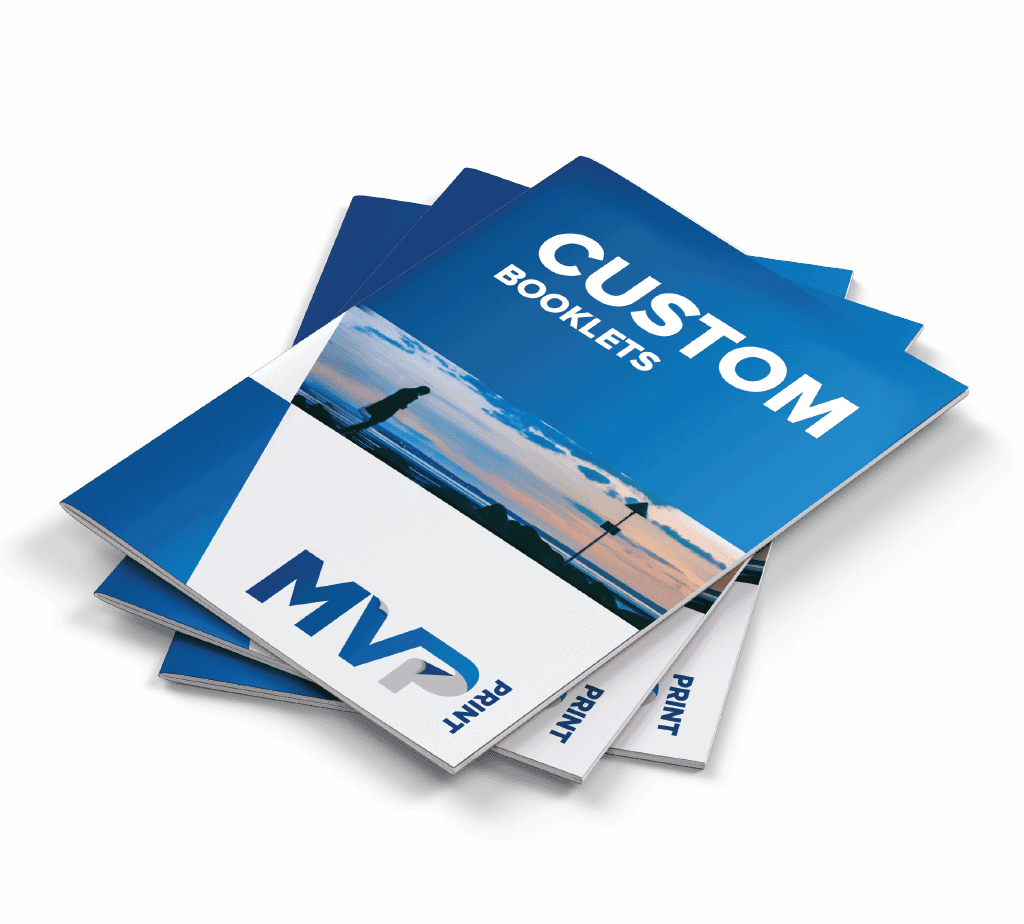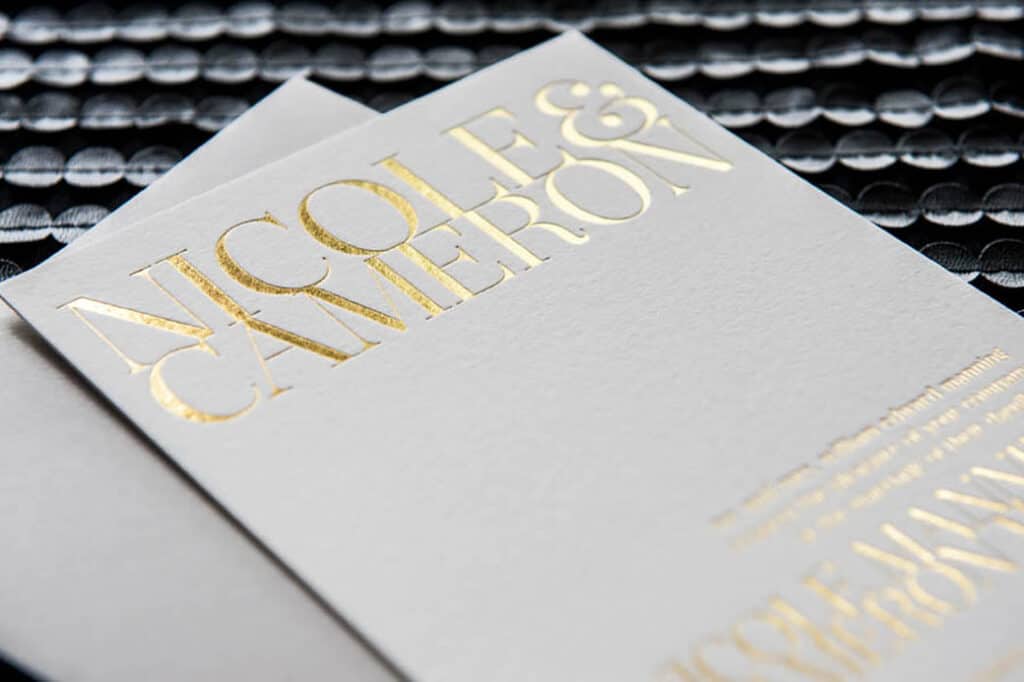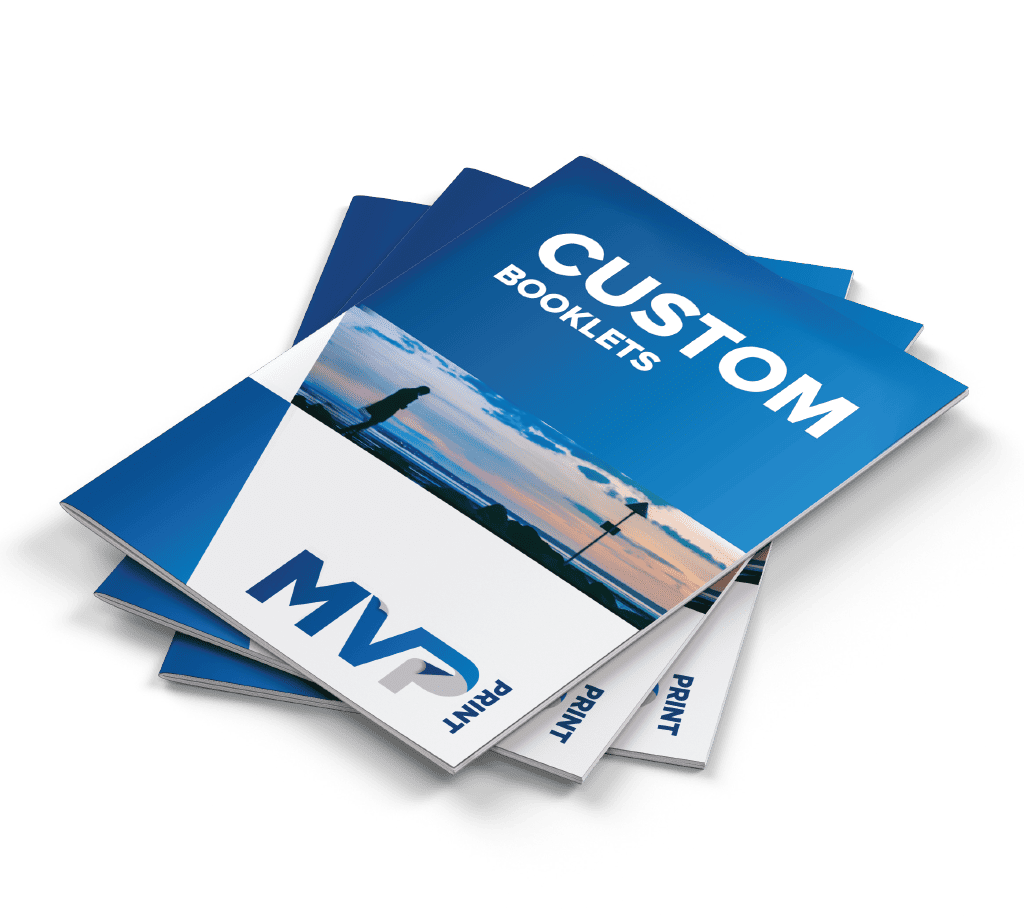
Saddle stitched book printing is a popular method for producing booklets, brochures, and short books. It involves folding the pages in half and stapling them together at the crease. This binding method offers several benefits, including cost-effectiveness and a professional finish. In this article, we will explore the process of saddle stitched book printing and provide valuable tips and tricks for beginners.
Key Takeaways
- Saddle stitched book printing is a cost-effective method for creating booklets.
- By folding and stapling the pages, you can achieve a professional finish.
- Choosing the right paper stock and cover design is crucial for a high-quality final product.
- Consider the page count and booklet size carefully for smooth binding.
- Adding special finishing touches and blank pages can enhance the overall look and functionality of your booklets.
Understanding Saddle Stitched Book Printing
Saddle stitched booklets are a popular choice for binding pages together in a cost-effective and professional manner. This method involves folding the pages in half and stapling them along the spine. It is commonly used for booklets, brochures, and magazines, providing a clean and polished finish.
What Is Saddle Stitched Booklet Binding?

Saddle stitched booklet binding is a method of securing pages together by folding them in half and using staples to attach them along the spine. This creates a clean and secure binding that allows the booklet to lay flat when opened. It is a widely used binding method for its simplicity and effectiveness in holding smaller quantities of pages together.
Why Choose Saddle Stitching for Your Project?
There are several reasons why saddle stitching may be the ideal choice for your project. Firstly, it is a cost-effective binding method, making it suitable for projects with a limited budget. Secondly, saddle stitching is relatively simple and quick, allowing for efficient production. Lastly, the professional appearance and ability to lay flat when opened make it a preferred choice for booklets, brochures, and other printed materials.
The Range of Saddle Stitched Products
Saddle stitching is suitable for a wide range of products. It is commonly used for booklets, brochures, magazines, event programs, school diaries, and policy documentation. Additionally, it can be utilized for exhibition catalogues, research materials, promotional pamphlets, and more. The versatility of saddle stitching makes it a popular choice in various industries.
Benefits of Saddle Stitched Booklets
Saddle stitched booklets offer several benefits for both creators and readers. Let’s explore some of these advantages:
Cost-Effectiveness of Saddle Stitch
Saddle stitched booklets are a cost-effective printing option, making them ideal for projects with budget constraints. The process involves folding and stapling the pages together, which is relatively inexpensive compared to other binding methods. Whether you’re a small business or a self-published author, saddle stitching allows you to produce professional-looking booklets without breaking the bank.
Professional Finish with Minimal Setup Costs
One of the key benefits of saddle stitched booklets is the professional finish they provide. The folded and stapled pages create a neat and organized appearance, giving your booklet a polished look. Additionally, saddle stitching requires minimal setup costs, making it a practical choice for printing projects. You can achieve a professional-grade booklet without incurring significant expenses.
Durability of Wire Staples Binding
The durability of wire staples binding is another advantage of saddle stitched booklets. The wire staples securely hold the pages together, ensuring that the booklet remains intact, even with frequent use. This makes saddle stitched booklets more resistant to wear and tear and extends their lifespan, allowing readers to enjoy the content for an extended period.
| Benefits of Saddle Stitched Booklets |
|---|
| Cost-effectiveness |
| Professional finish with minimal setup costs |
| Durability of wire staples binding |
Design Considerations for Saddle Stitch Booklet Printing
When designing saddle stitched booklets, there are several key considerations to ensure a successful outcome. Paying attention to margin and layout, choosing the right paper stock, and considering the impact of cover design are essential steps in creating a high-quality and visually appealing booklet.
Margin and Layout Tips for Saddle Stitched Books
Setting appropriate margins and layout is crucial to prevent any important content from being cut off during the binding process. To avoid text or images being trimmed, it is recommended to keep important elements, such as text or images, at least 3mm away from the trim line. Additionally, leaving some space in the inner margins near the spine will prevent crucial content from being obscured by the binding.
Here are some layout tips to consider:
- Avoid placing important information close to the gutters or crease where the pages will be folded.
- Ensure consistency in font sizes, styles, and spacing throughout the booklet.
- Use grids or guides to align elements and maintain a neat and organized layout.
Choosing the Right Paper Stock for Your Booklet
The choice of paper stock can greatly influence the overall quality, feel, and durability of the booklet. Consider factors such as weight, finish, and color to align with the purpose and desired aesthetic of the booklet. Here are some popular options:
| Paper Type | Usage | Description |
|---|---|---|
| Glossy | Brochures, catalogs | Provides a smooth and shiny finish, enhancing color vibrancy and image sharpness. |
| Matte | Magazines, art books | Offers a non-reflective surface, providing a sophisticated and elegant look. |
| Recycled | Environmentally conscious projects | Utilizes paper made from post-consumer waste, contributing to sustainability efforts. |
| Textured | Specialty booklets | Brings a unique tactile element to the booklet with textured surfaces or embossed patterns. |
Choosing the appropriate paper stock ensures an engaging reading experience and aligns with the intended purpose of the booklet.
Impact of Cover Design on the Final Product

The cover design of a saddle stitched booklet plays a crucial role in attracting readers’ attention and setting expectations for the content inside. A well-designed cover can greatly impact the overall perception and appeal of the booklet. Here are some considerations when designing the cover:
- Create a visually striking cover that communicates the essence of the booklet’s content.
- Utilize eye-catching imagery, bold typography, or a combination of both to create visual interest.
- Consider incorporating the title, author, or key message on the cover for easy identification and branding.
- Ensure the cover design is aligned with the intended audience and conveys the appropriate tone and style.
Investing time and effort into designing an appealing cover will entice readers to pick up the booklet and engage with its contents.
Saddle Stitched Book Printing and Page Count
Saddle stitched book printing is an ideal method for producing booklets and brochures with a lower page count. While there is no strict minimum or maximum limit, it is generally recommended to keep the booklets under 76 pages to ensure a smooth binding process. For thicker booklets, alternative binding methods like perfect binding may be more appropriate.
Selecting the Ideal Booklet Size and Orientation
When it comes to saddle stitched booklets, choosing the right size and orientation is crucial to ensure a visually appealing and effective final product. The ideal booklet size and orientation depend on the intended purpose and target audience of the booklet.
Common Sizes for Effective Saddle Stitched Book Printing
There are several common sizes that work well for saddle stitched booklets. These sizes have proven to be effective in various applications and are widely used in the industry. Here are some of the most common sizes:
| Size | Dimensions |
|---|---|
| A4 | 210 mm x 297 mm |
| A5 | 148 mm x 210 mm |
| DL | 99 mm x 210 mm |
Note: These dimensions are approximate and may vary slightly depending on the printing specifications of your chosen printing specialist.
Orientation: Landscape vs. Portrait
Another important consideration when selecting the ideal size and orientation is whether to choose landscape or portrait orientation for your saddle stitched booklet. Each orientation offers a different visual experience and can be chosen based on the content and design preferences.
Landscape orientation is wider than it is tall and can be suitable for designs that require a wider space for images or a panoramic layout. It can also be a great choice for showcasing visuals or large graphs.
On the other hand, portrait orientation is taller than it is wide and is typically used for content that is read vertically, such as text-heavy booklets or documents. It is a more traditional orientation that works well for instructional materials or long-form content.
Ultimately, the choice between landscape and portrait orientation depends on the specific needs and goals of your booklet. Consider the content, design elements, and readability when making this decision.
Preparing Your Artwork for Printing
Before sending your artwork for saddle stitched book printing, it is important to properly prepare it for the printing process. This includes ensuring that all images and text are in the correct format and resolution, adjusting colors and contrasts, and double-checking for any errors or inconsistencies. Properly preparing the artwork will help ensure a high-quality final product.
| Steps to Prepare Artwork | Details |
|---|---|
| 1. Check File Format | Make sure that your artwork is saved in a print-ready file format such as PDF or TIFF. These formats preserve the quality of your images and allow for accurate printing. |
| 2. Set the Correct Resolution | Ensure that all images in your artwork have a resolution of at least 300 dots per inch (DPI) to maintain sharpness and clarity when printed. |
| 3. Adjust Colors and Contrasts | Review your artwork to ensure that colors are vibrant and contrasts are well-balanced. Make any necessary adjustments to achieve the desired visual effect. |
| 4. Check for Errors and Inconsistencies | Thoroughly proofread your artwork to identify any spelling or grammatical errors. Also, check for any inconsistencies in fonts, styles, or formatting. |
By following these steps to prepare your artwork, you can optimize it for saddle stitched book printing and increase the chances of getting a high-quality final product.
Navigating Cover Printed Options for Enhanced Appearance
The cover of a saddle stitched booklet is crucial in creating a visually appealing and professional-looking product. When it comes to cover printed options, there are various choices to consider that can enhance the overall appearance of the booklet.
Glossy vs. Matte: What Suits Your Project Best?
One important decision to make is whether to opt for a glossy or matte finish for the cover. A glossy finish offers a shiny and reflective surface that can bring out the vibrant colors and details of images. It is a great choice for booklets that aim to captivate the readers’ attention.
On the other hand, a matte finish provides a more subtle and sophisticated look. It has a non-reflective surface that offers a smooth and elegant texture. It is often chosen for booklets with a more professional or minimalist aesthetic.
Deciding between glossy and matte finishes depends on the nature of your project, the target audience, and the desired visual impact. Consider the content and style of the booklet to determine which option will best complement the overall design.
Incorporating Images and Text on Covers
Another aspect to consider when navigating cover printed options is how to effectively incorporate images and text. The cover design should align with the content of the booklet and communicate its purpose to the readers.
Images can be used to create visual interest and convey key messages. Whether it’s a striking photograph, a captivating illustration, or a combination of both, incorporating images on the cover can make the booklet more appealing and enticing.
Additionally, strategically placing text on the cover can provide a brief summary, highlight important points, or create intrigue. Consider using eye-catching fonts, catchy phrases, or compelling headlines to grab the readers’ attention and entice them to explore the contents of the booklet.
Remember to ensure that the text and images on the cover are clear and legible. Consider the size, color, and placement to ensure that they are easily readable and visually appealing.
Incorporating Blank Pages in Your Saddle Stitch Booklet
Including blank pages in your saddle stitch booklet can provide various benefits and enhance its functionality. Blank pages offer space for note-taking, allowing readers to jot down important information or make annotations. They also provide room for additional content, such as charts, graphs, or illustrations, that may not fit within the main body of the booklet. Additionally, incorporating blank pages can contribute to a visually appealing layout, creating breaks between sections or chapters and ensuring a more aesthetically pleasing design.
When deciding on the inclusion of blank pages, it is essential to consider the overall design and purpose of your booklet. Determine the specific needs of your audience and how they are likely to interact with the booklet. If your booklet is intended for educational or informational purposes, incorporating blank pages for note-taking can enhance its usefulness. On the other hand, if your booklet is primarily focused on visual elements, such as photography or artwork, blank pages can serve as a canvas to highlight these visuals.
Special Finishing Touches for a Custom Look

When it comes to creating saddle stitched booklets, adding special finishing touches can take them to the next level and give them a custom look and feel. Here at MVP Print, there are various options and an extensive range available to make your booklets stand out and leave a lasting impression on your readers. Email us on sales@mvpprint.com.au for more details.
Adding Hard Cover Options to Saddle Stitched Book Printing
If you want to give your saddle stitched booklets a more premium and professional appearance, consider adding hard covers. Hard covers provide extra durability and protection to your booklets. They create a sturdy base and make your booklets feel more substantial in the hands of your readers. Whether you want to add a touch of elegance or enhance the longevity of your booklets, hard covers are an excellent choice ginst the standard self cover (same stock on the cover as the inner printed pages)
Customisation with Double-Sided and Full-Color Prints
To make your saddle stitched booklets truly unique, you can opt for customisation options like double-sided printing and full-color prints. Double-sided printing allows you to utilize both sides of the pages, maximizing space and providing more room for content, images, and graphics. Full-color prints bring vibrancy and depth to your booklets, making them visually appealing and engaging.
By incorporating these special finishing touches into your saddle stitched booklets, you can create a custom look that reflects your brand, captivates your audience, and sets your booklets apart from the rest.
How to Add Blank Pages to Your Saddle Stitch Booklet
Adding blank pages to a saddle stitch booklet can be easily accomplished during the design and layout phase. By carefully planning the page order and structure, you can seamlessly incorporate blank pages into your booklet. Whether you are using design software or seeking professional assistance, here’s a step-by-step guide to adding blank pages to your saddle stitch booklet:
- Begin by determining the desired number of blank pages and their placement within the booklet.
- In your design software, create new pages to serve as your blank pages. Make sure they match the dimensions and layout of the rest of your booklet.
- Arrange the sequence of your pages, taking into consideration the placement of your blank pages. Ensure that the order flows logically.
- Design your content on the remaining pages, leaving the designated blank pages intentionally empty.
- Save and export your design file, making sure to preserve the correct page order and format.
- Submit your design file to your printing specialist, specifying the inclusion of blank pages in your saddle stitch booklet.
By following these steps, you can effectively add blank pages to your saddle stitch booklet, providing space for note-taking, additional information, or creating a visually appealing layout.
For professional printing services that can assist you in incorporating blank pages into your saddle stitch booklet, consider working with MVP Print.
Choosing the Right Printing Specialist

When it comes to your saddle stitched book printing project, selecting the right printing specialist is crucial. You want to ensure that they have the expertise, reputation, and capabilities to deliver the quality and results you desire. Here are some key factors to consider when making your choice:
What to Look for in a Printing Partner
1. Experience: Opt for a printing partner who has extensive experience in saddle stitched book printing. This expertise ensures they understand the intricacies of the process and can provide valuable insights and recommendations.
2. Reputation: It’s important to choose a printing specialist with a solid reputation in the industry. Look for positive reviews, testimonials, and references from previous clients to gauge their reliability and customer satisfaction.
3. Capabilities: Consider the range of services and capabilities offered by the printing specialist. Do they have the necessary equipment and technology to handle your project effectively? Can they accommodate customization requests and unique specifications?
4. Communication and Customer Service: Clear and effective communication is essential throughout the printing process. Ensure that the printing specialist is responsive, attentive to your needs, and provides excellent customer service.
By taking these factors into account, you can make an informed decision and choose a printing partner that meets your requirements.
The Role of MVP Print in Achieving Top Quality
MVP Print is a trusted printing company that excels in saddle stitched book printing. With years of experience in the industry, they offer top-quality printing services and strive for customer satisfaction. Their team of experts understands the nuances of saddle stitched binding and ensures that every project is executed with precision and attention to detail.
When you choose MVP Print as your printing specialist, you can expect:
- High-quality materials: MVP Print uses top-quality paper stock and ink to create durable and visually appealing saddle stitched booklets.
- Professional expertise: Their team of experienced professionals ensures that every aspect of your project, from design to printing, is handled with care and expertise.
- Attention to detail: MVP Print pays close attention to every detail, ensuring accurate trimming, alignment, and placement of elements for a polished and professional finish.
- Timely delivery: With their efficient production processes, MVP Print strives to deliver your saddle stitched booklets on time, without compromising on quality.
- Excellent customer service: MVP Print values their customers and provides exceptional customer service, addressing any queries or concerns promptly and ensuring a smooth printing experience.
When it comes to saddle stitched book printing, choosing MVP Print as your printing specialist ensures that you receive top-quality results that meet your expectations.
Comparison of Printing Specialists
| Factors | Printing Specialist A | Printing Specialist B | MVP Print |
|---|---|---|---|
| Experience | 10 years | 5 years | 15 years |
| Reputation | Positive testimonials | Mixed reviews | Excellent reputation |
| Capabilities | Limited customization options | Advanced technology | Wide range of services |
| Communication | Slow response times | Responsive and helpful | Prompt and clear communication |
| Customer Service | Inconsistent | Good | Excellent customer service |
Conclusion
In conclusion, saddle stitched book printing is a versatile and cost-effective method for creating booklets, brochures, and short books. By following the tips and tricks shared in this article, beginners can ensure a smooth and successful printing process. Starting your saddle stitched printing journey with confidence will result in high-quality, professional booklets that meet your needs and exceed your expectations.
Key Takeaways for Saddle Stitched Book Printing Newbies
Here are the key takeaways for those new to saddle stitched book printing:
- Saddle stitched book printing is an affordable option for producing booklets and brochures.
- Consider the page count and choose the appropriate binding method.
- Pay attention to design considerations such as margin and layout, paper stock, and cover design.
- Properly prepare your artwork for printing to ensure high-quality results.
- Explore cover printed options and incorporate special finishing touches for a custom look.
- Consider the inclusion of blank pages for note-taking or creative layouts.
- Choose the right printing specialist like MVP Print to ensure top-quality results.
Starting Your Saddle Stitched Book Printing Journey with Confidence
Now that you have a better understanding of saddle stitched book printing, it’s time to embark on your printing journey with confidence. Armed with the knowledge and tips provided in this article, you can create professional, cost-effective booklets that make a lasting impression. So, get started and explore the endless possibilities of saddle stitched book printing today!
FAQ
What is saddle stitched booklet binding?
Saddle stitched booklet binding is a method of securing pages together by folding them in half and stapling them along the spine. It is commonly used for booklets, brochures, and magazines.
Why choose saddle stitching for your project?
Saddle stitching is chosen for its cost-effectiveness, ease of production, and professional appearance. It is suitable for various projects, including event programs, event booklets, school diaries, and policy documentation.
What is the range of saddle stitched products?
The range of saddle stitched products includes exhibition catalogues, research material, promotional pamphlets, and more.
What are the benefits of saddle stitched book printing ?
Saddle stitched booklets are cost-effective, offer a professional finish with minimal setup costs, and have the durability of wire staples binding.
What are some design considerations for saddle stitch booklet printing?
When designing saddle stitched booklets, it is important to set appropriate margins and layout, choose the right paper stock, and consider the impact of the cover design.
What is the recommended page count for saddle stitched booklets?
While there is no strict minimum or maximum page count, it is generally recommended to keep the booklets under 100 pages to ensure smooth binding.
What are some common sizes for effective saddle stitched book printing?
Common sizes for effective saddle stitched booklets include A4, A5, and DL sizes in both landscape and portrait orientations.
How do I prepare my artwork for saddle stitched book printing?
Properly prepare your artwork by ensuring correct format and resolution, adjusting colors and contrasts, and checking for any errors or inconsistencies.
What are some options for cover printed enhancements?
You can choose between glossy and matte finishes and incorporate images and text on the covers to enhance the appearance of your saddle stitched booklet.
Why should I incorporate blank pages in my saddle stitch booklet?
Incorporating blank pages in your saddle stitch booklet can provide space for note-taking, additional information, or create a visually appealing layout.
How can I add special finishing touches to my saddle stitch booklet?
You can add hard cover options to your saddle stitch booklet or opt for double-sided and full-color prints to give it a custom look and feel.
How do I add blank pages to my saddle stitch booklet?
Blank pages can be seamlessly incorporated into your saddle stitch booklet by properly planning the page order and structure during the design and layout phase.
What should I consider when choosing a printing specialist for saddle stitch book printing?
When choosing a printing specialist, consider their expertise, reputation, and capabilities in saddle stitched book printing. Look for a trusted partner like MVP Print.
What are some key takeaways for saddle stitched book printing newbies?
Key takeaways include the cost-effectiveness and professional finish of saddle stitched booklets, the importance of design considerations, and the benefits of incorporating blank pages.
How should I start my saddle stitched book printing journey with confidence?
Start your saddle stitched printing journey with confidence by following the tips and tricks shared in this article and ensuring a smooth and successful printing process.









